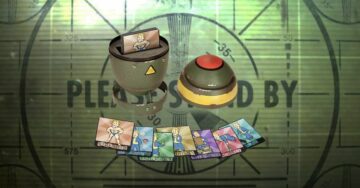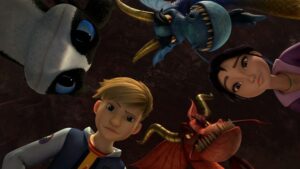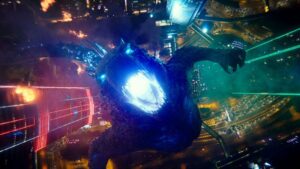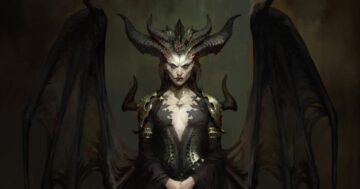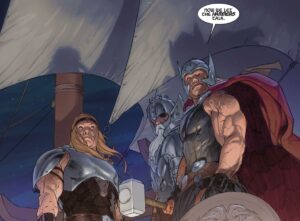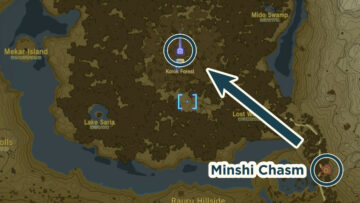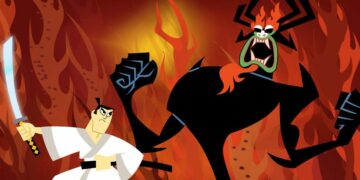When Tanjiro Kamado first met Muzan Kibutsuji on Demon Slayer, the series’ Big Bad probably wasn’t exactly what most viewers were expecting. For the legendary Demon King who’s been alive for more than a millennium and set Tanjiro on the path to becoming a Demon Slayer by mercilessly slaughtering most of his family, Muzan looked … well, a bit like Michael Jackson from the “Smooth Criminal” video: White pants, white tie, and slightly curled hair falling out from underneath his white hat and all. But that attire represents more than just a bold fashion choice. It’s yet another example of Japanese horror’s tradition of fearing modern things and their corrupting influence.
Demon Slayer takes place during the Taisho Era (1912-1926), a period of steady modernization after the turbulent years of the Meiji Restoration when the shogunate was abolished, the emperor returned to power, and Japan opened its borders to the world. During this time, foreign fashion became very popular in Tokyo and beyond, which Muzan is fully embracing. Demon Slayer isn’t the first work of fiction to link Western-style clothing to something terrifying and sinister. You can find similar themes in one of the first works of modern Japanese fantasy/horror, the same genre that Demon Slayer happens to find itself in.
Published in 1908, just a few years before the start of the Taisho Era, Ten Nights of Dreams is the work of Natsume Sōseki, one of the most popular writers in Japanese history. Every school in the country covers at least one work by Sōseki, and while the 1908 anthology rarely makes that list, there isn’t a Japanese adult alive who doesn’t know the name of its author.
The stories featured in Ten Nights of Dreams are all mostly unconnected besides the fact that they take place in dreams but collectively they seem to revolve around a central, dual theme: a fear of an unknown, modernized future, and a longing for the tranquil but also all-powerful world of tradition and nature. In “The Seventh Night,” a dreaming character finds themselves on a huge steamship billowing black smoke into the sky. Most of the passengers are foreigners and the dreamer feels lost and alone among them as the ship heads westward. “The Sixth Night,” on the other hand, is about the dreamer not being able to find beauty like that of the sculptures by the real-life artist Unkei (1150 – 1223) in wood from the Meiji Era.
The collection’s primary themes seem to come together in “The Tenth Night” about a dandy named Shōtarō who wears a so-called Panama hat and is actually the only character crossing over from one story to another, having been mentioned briefly in “The Eighth Night.” In the final tale of the anthology, Shōtarō arrives at a bucolic meadow and ends up fighting a herd of pigs trying to lick him. Given how all the previous stories sure do read like Sōseki working out his justified anxieties about his rapidly changing homeland, it’s tempting to interpret the story as more fears about how going full-hog (I said what I said) on foreign culture will lead to a catastrophe of some kind and the twisting of nature into something sinister.
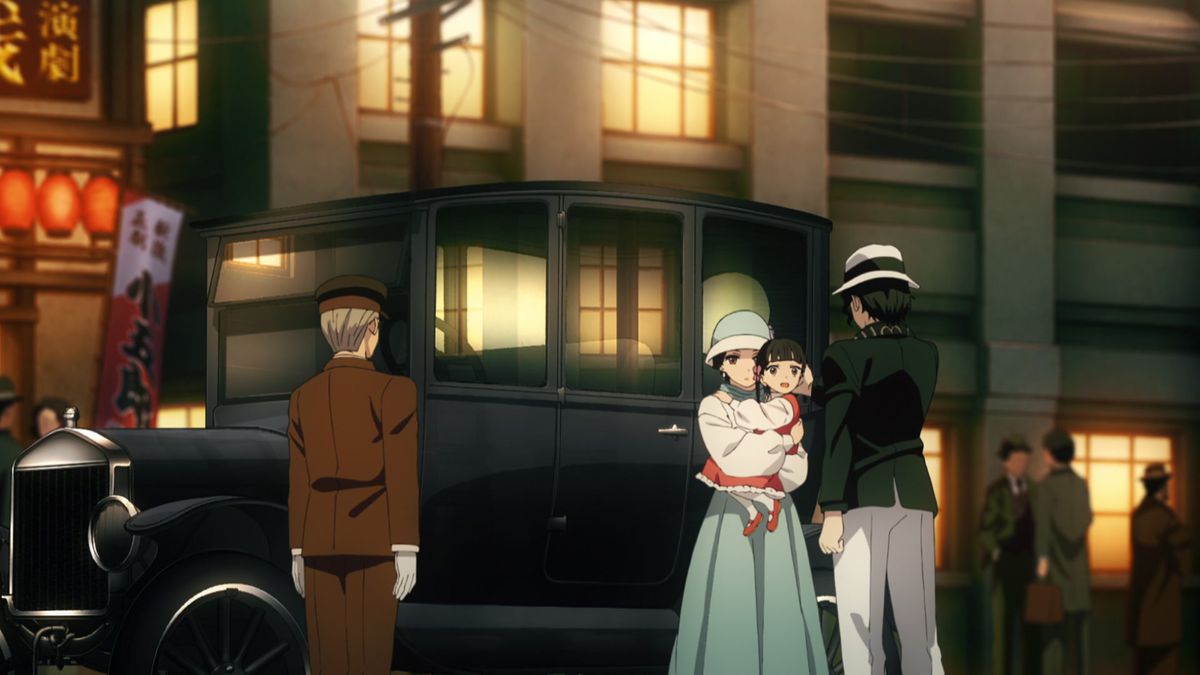
It’s a choice that echoes through Muzan’s plotline, even if it’s not totally clear what kind of hat Muzan is wearing. Regardless of if it’s a true Panama hat (or a narrow-brimmed fedora, or a trilby without the distinctive fold in the back), the choice feels evocative of the same influences in Shōtarō’s stories. This isn’t to suggest that the author of Demon Slayer, Koyoharu Gotōge, is literally and figuratively demonizing modernization and technology — seeing as he almost definitely used a tablet to draw his bestselling comic, and communicates using a cell phone instead of a Kasugai Crow. But given that Muzan’s hat is undeniably Western, it sure does seem like the anime has gone out of its way to establish the Demon King as a malicious force specifically associated with modernity. And it doesn’t end with his attire.
It couldn’t have been a coincidence that Muzan and Tanjiro first crossed paths in the entertainment district of Asakusa, a symbol of Western modernity bathed in artificial light with electric streetcars crossing the streets. Right before the two characters meet, Tanjiro even expresses how overwhelmed he feels by all this technology and noise, and retreats to an udon stall to order some noodles topped with grated Japanese mountain yam.
Everything about their encounter is setting up the two characters as polar opposites. In one corner, you have Muzan in his modern-style clothes and hat that allow him to blend into a world of technology and electricity, where he can hide in plain sight. In the other corner, there’s Tanjiro in his traditional Ichimatsu (checkered)-pattern jacket, who’s having trouble assimilating and finds solace in food that reminds him of his rural upbringing in the natural world of Japanese mountains.
Whether it’s a deliberate nod to Ten Nights of Dreams or not, it’s definitely an example of Demon Slayer following the well-established patterns found in a lot of modern Japanese fantasy and horror, which itself seems to have taken more than a few cues from Natsume Sōseki.
In the 1927 novella Kappa by Ryunosuke Akutagawa, another famous Japanese author, the world of the titular Japanese water imps (tradition/nature) becomes a satirical dystopia where worker kappa are ground-up and consumed by their kin after their society adopted modern ways of life. Gojira tells the story of an ancient beast (world of nature) that becomes destructive due to an encounter with atomic bombs (modernity/technology). More recently, you have Ring, where the ghost child Sadako is often seen dripping wet, making her something akin to a deadly water spirit (corrupted nature) that kills people via VHS tapes, the modern technology of 1991 when the original Ring novel came out. The Grudge franchise is a story about the destruction of a traditional Japanese family unit in modern suburbia, while 2021’s Suicide Forest Village uses the internet as an intermediary between the protagonists and a malicious force of nature.
Demon Slayer seems to be in conversation with those stories, as it portrays Muzan as an evil force tapped into modernity that corrupts nature. The best example of that is Muzan creating Rui, a Spider Demon who in turn creates a whole family of grotesque Spider Demons. Traditionally, spiders are actually considered very benevolent creatures in Japanese Buddhism. In the short story The Spider’s Thread by Ryunosuke Akutagawa — published in 1918 smack in the middle of the Taisho Era — a spider is sent to Hell by the Buddha to help save a sinner. But Muzan, the walking symbol of modernity, took that gentle creature of nature and corrupted it into something terrifying.
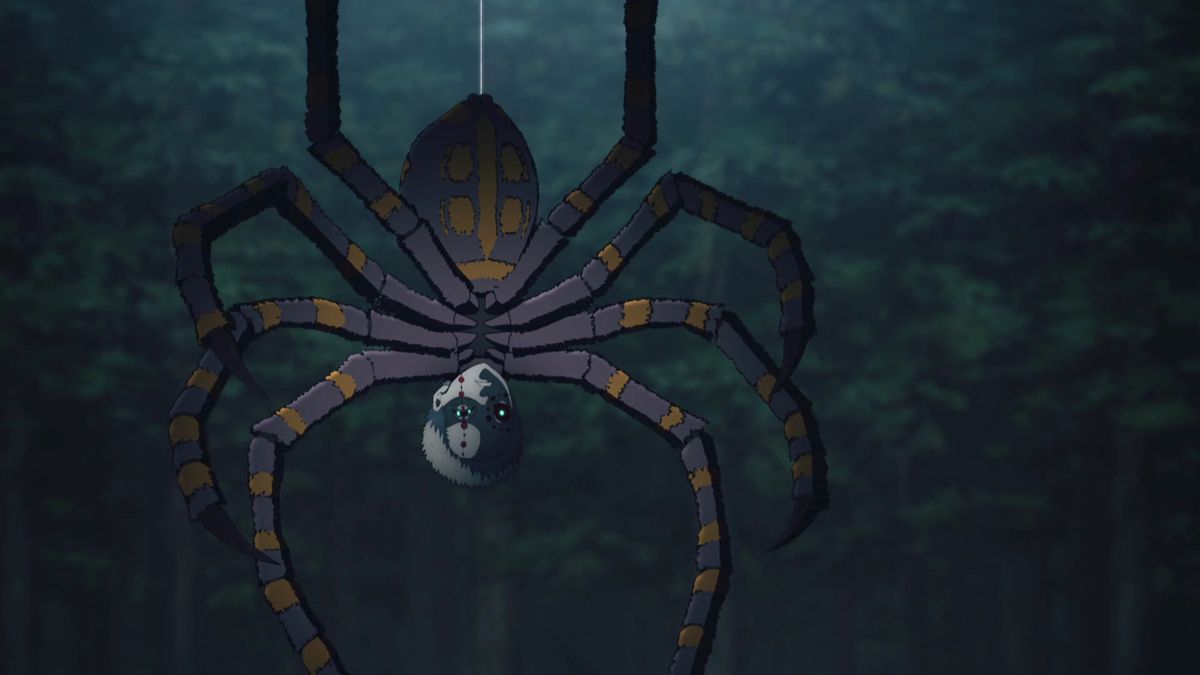
It’s true that in later episodes, Muzan also appears as a woman wearing a kimono when he’s holding court over other Demons, most of whom are also wearing traditional Japanese clothing. This might have something to do with Demons (or “Oni”) themselves being part of traditional Japanese culture. Myths about Oni go back to at least the 10th century, and over the last millennium, the creatures have become a big part of Japanese folklore, often playing the part of stock villains for brave heroes from legends or classic theater plays to beat up. In anime like Dragon Ball Z, they’re even treated like comic relief. In short, they’re not taken too seriously in their traditional state. Even in Demon Slayer, before the introduction of Muzan, Demons were mainly portrayed as snarling, almost mindless beasts. Dangerous, sure, but no more than, say, a hungry bear.
But then Demon Slayer dressed up the most powerful Oni out there in the official uniform of fantasy terror and corruption during his very first appearance. It showed that the Demon King is smart and capable of hiding in plain sight in the modern world, but also that he’s more than just one monster. He rose above his traditional origins and became a more insidious, supernatural force to be reckoned with. And all those complex themes were telegraphed through a simple, floppy white hat.
Source: https://www.polygon.com/22904658/demon-slayer-muzan-hat-costume-explained-horror
- "
- All
- among
- anime
- around
- artist
- Beauty
- BEST
- Bit
- Black
- brave
- child
- Clothing
- content
- Conversation
- Corruption
- Court
- covers
- Creating
- Culture
- dreams
- During
- Electric
- electricity
- ends
- Entertainment
- family
- FANTASY
- Fashion
- fears
- featured
- Fedora
- finds
- First
- food
- future
- Ghost
- Hair
- having
- Hide
- history
- How
- HTTPS
- huge
- Hungry
- i
- influence
- Internet
- IT
- Japan
- Japanese
- Kills
- Kin
- King
- lead
- Legendary
- light
- LINK
- List
- looked
- Making
- Modern
- more
- Most Popular
- Noise
- official
- order
- Other
- Panama
- People
- Playing
- Polygon
- Popular
- power
- powerful
- relief
- Rural
- Said
- School
- set
- setting
- Short
- Simple
- smart
- Society
- start
- State
- stock
- Stories
- Story
- supernatural
- Tablet
- Technology
- The
- the world
- Theater
- theme
- Through
- TIE
- time
- together
- tokyo
- traditional
- Video
- viewers
- Village
- walking
- Water
- What
- WHO
- woman
- Work
- working
- working out
- works
- world
- years
- youtube
- Z


